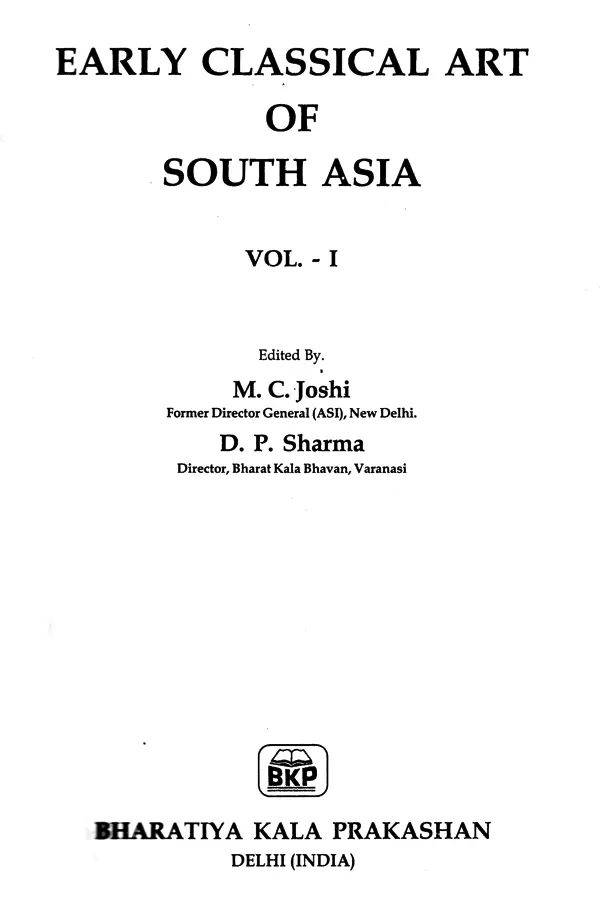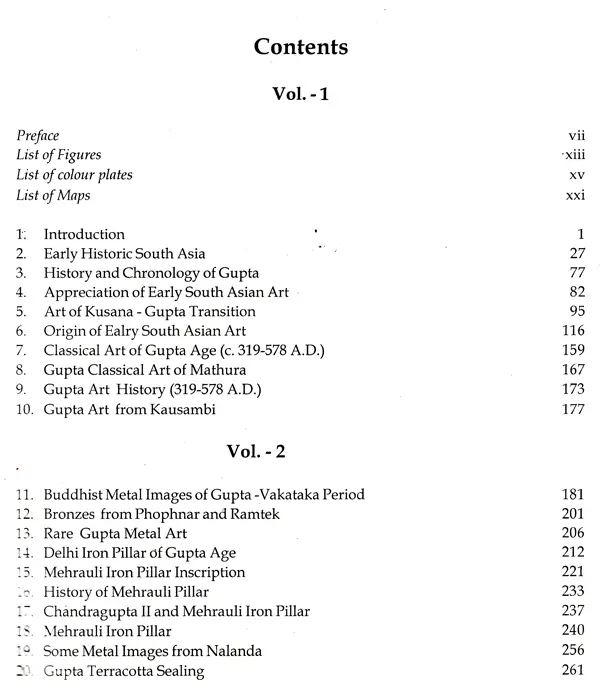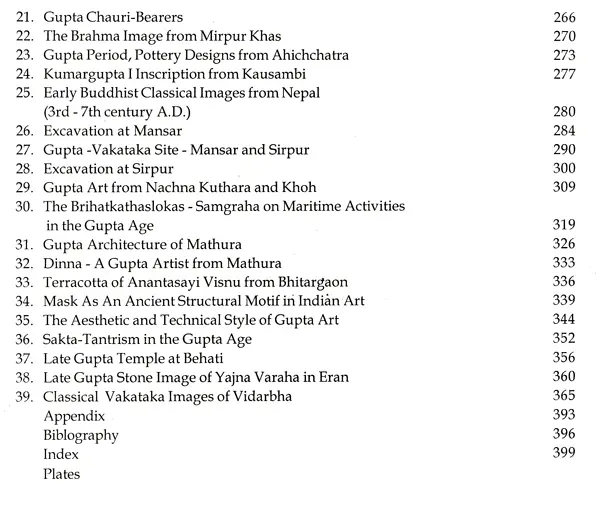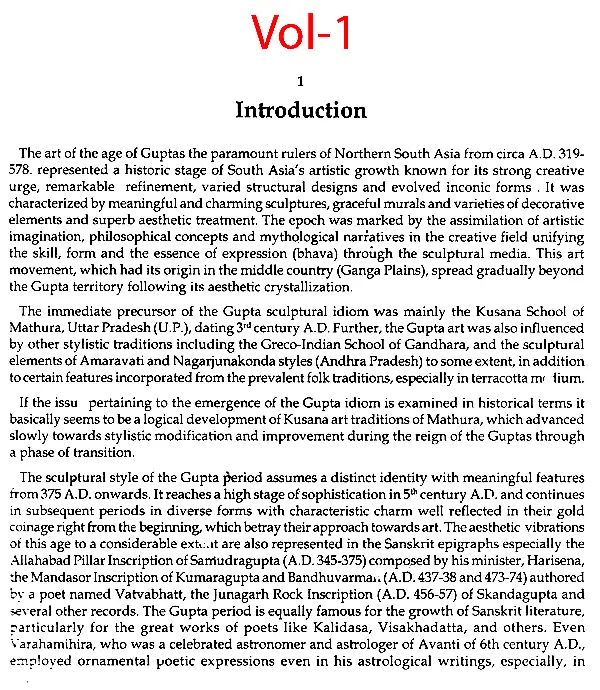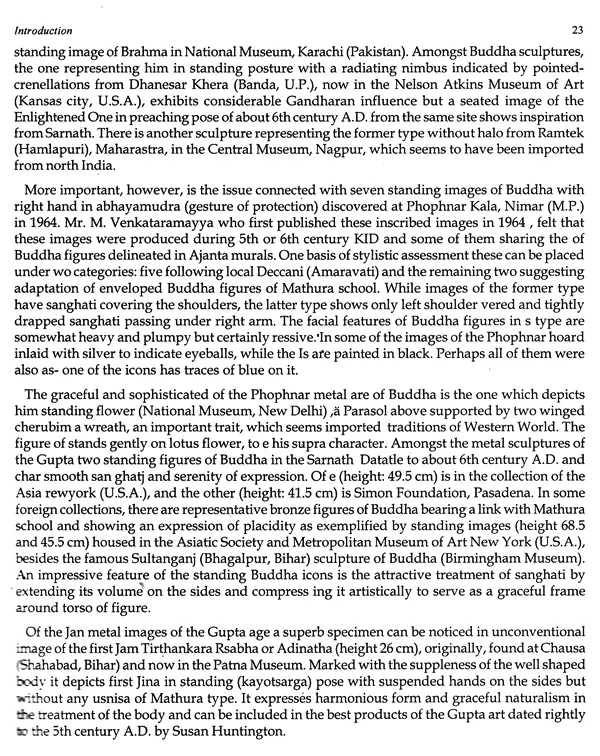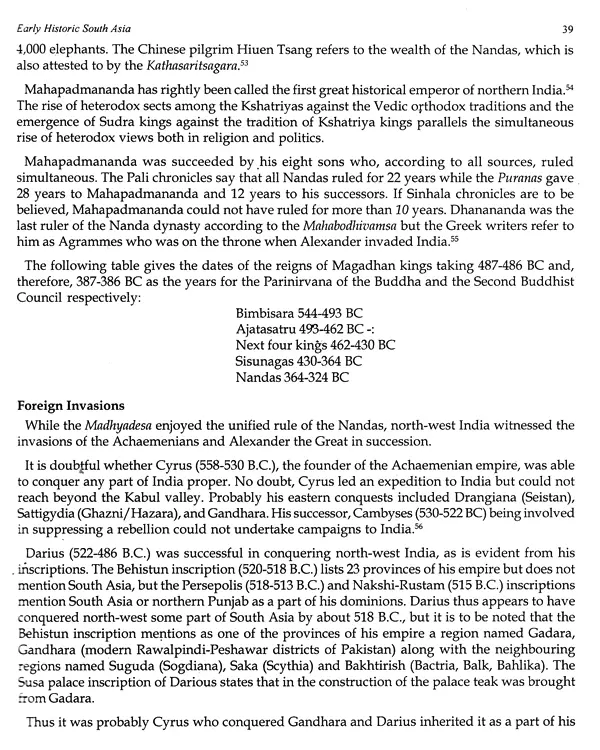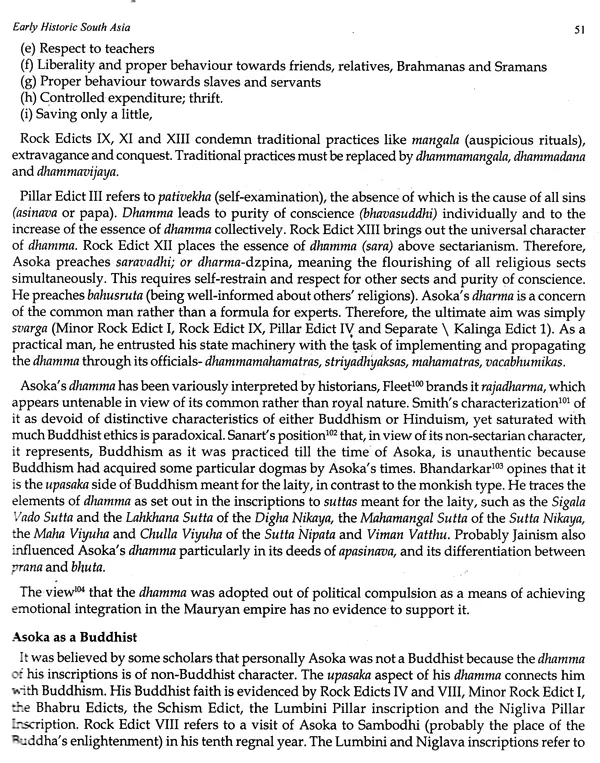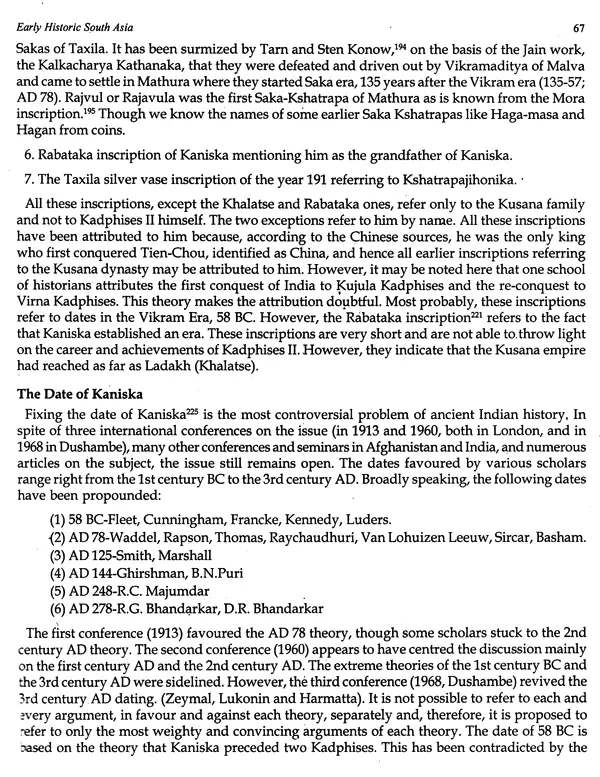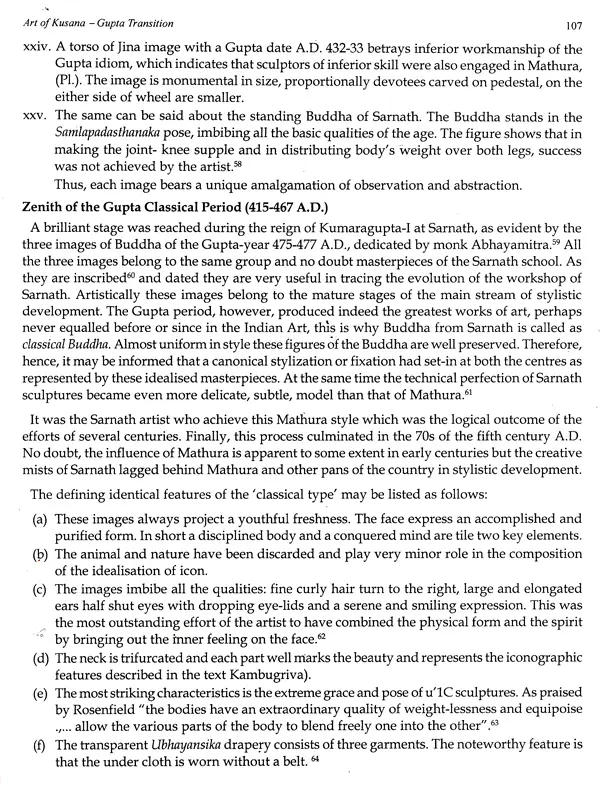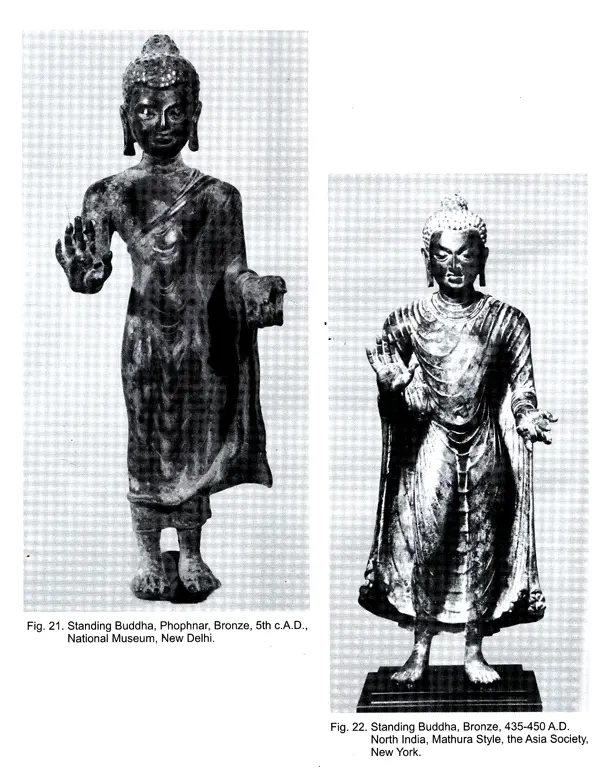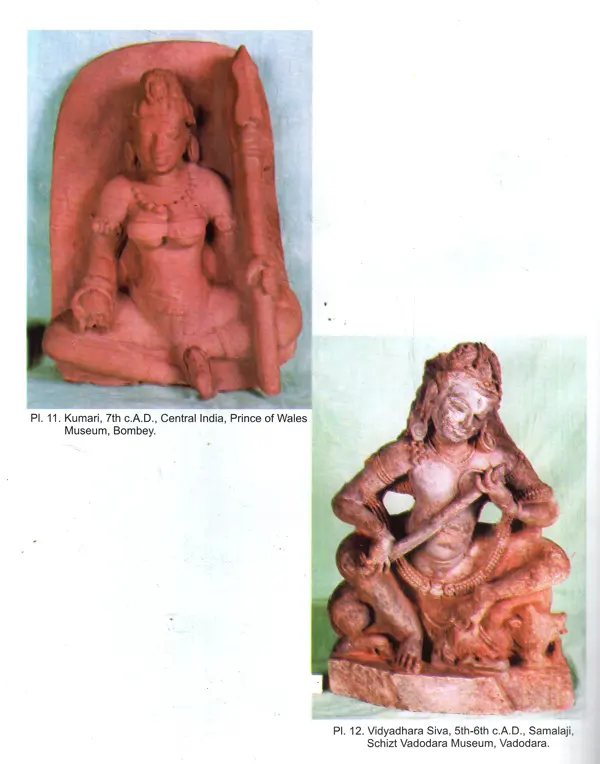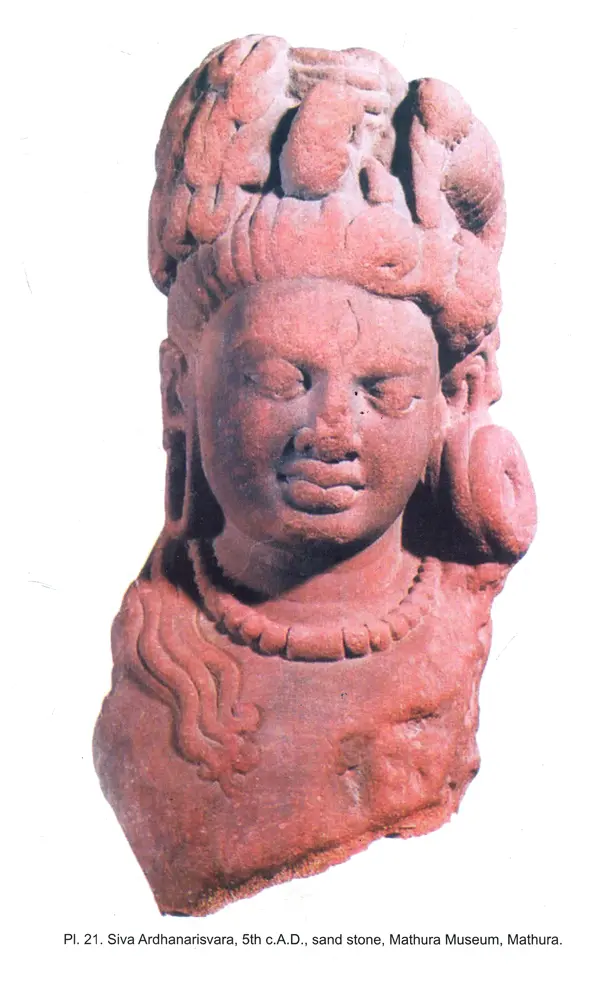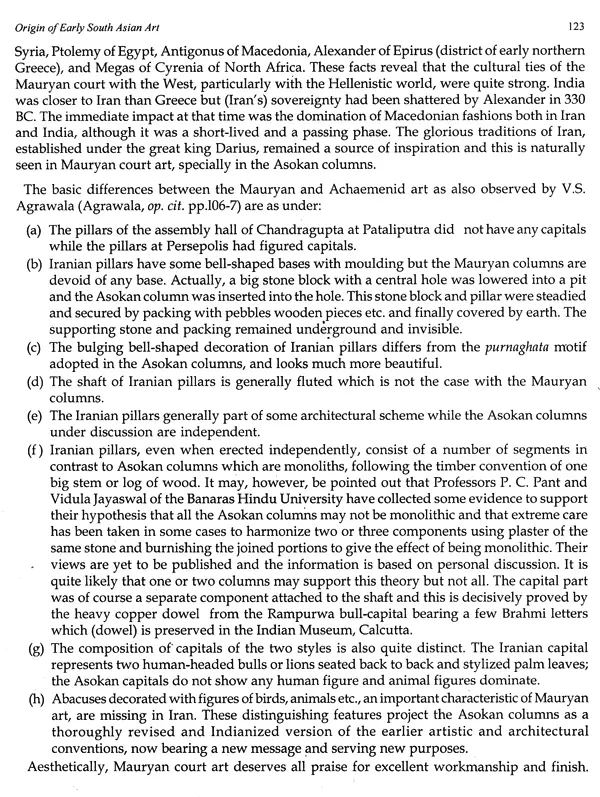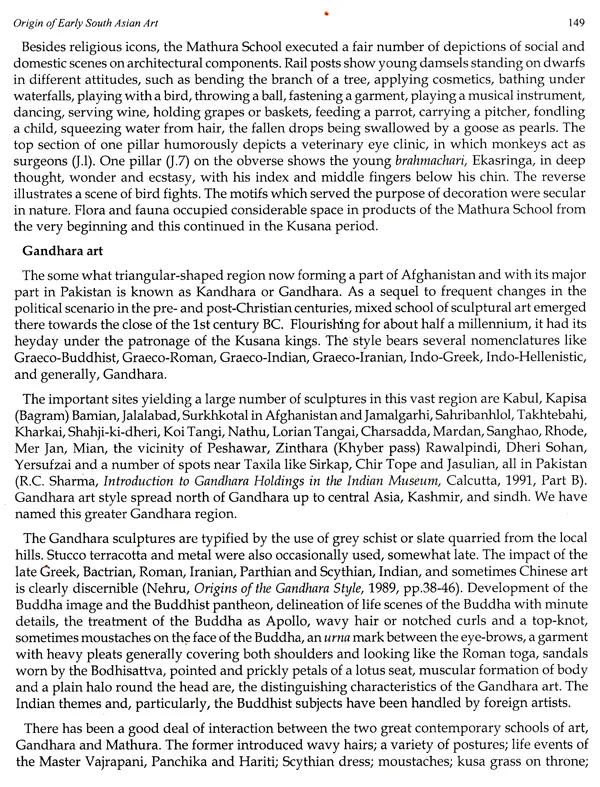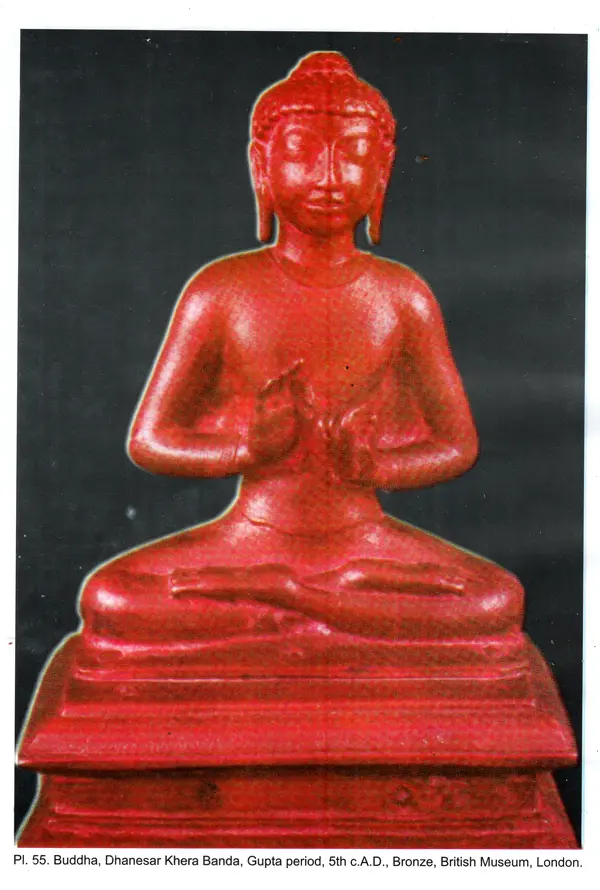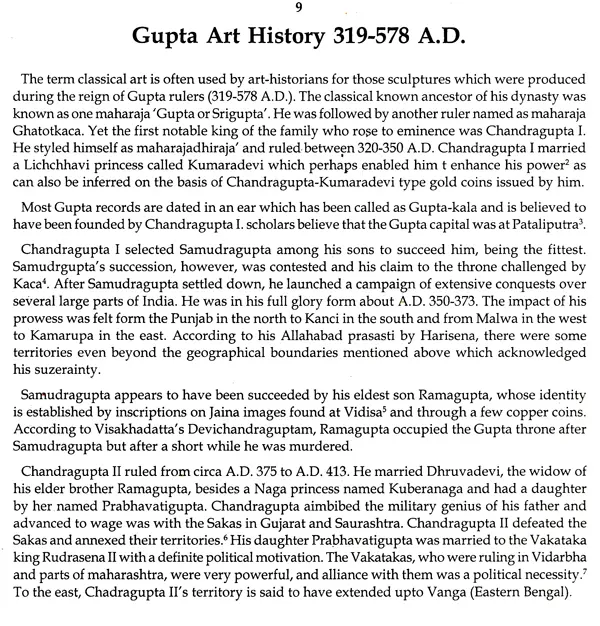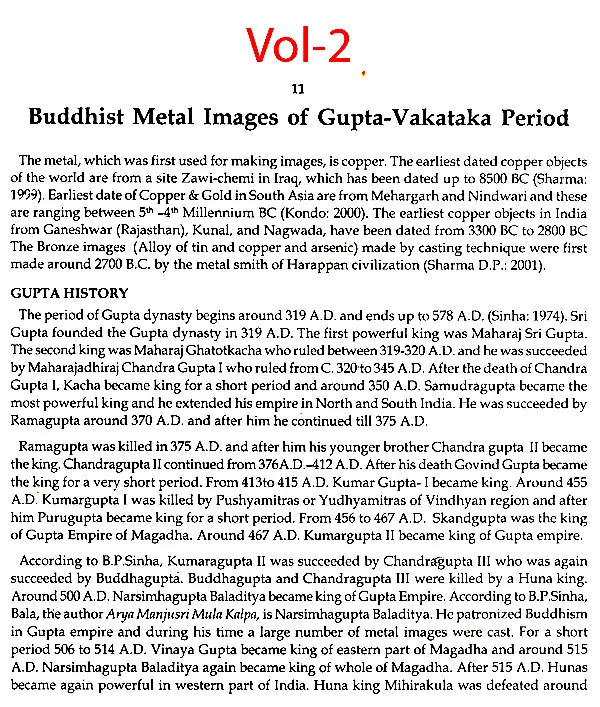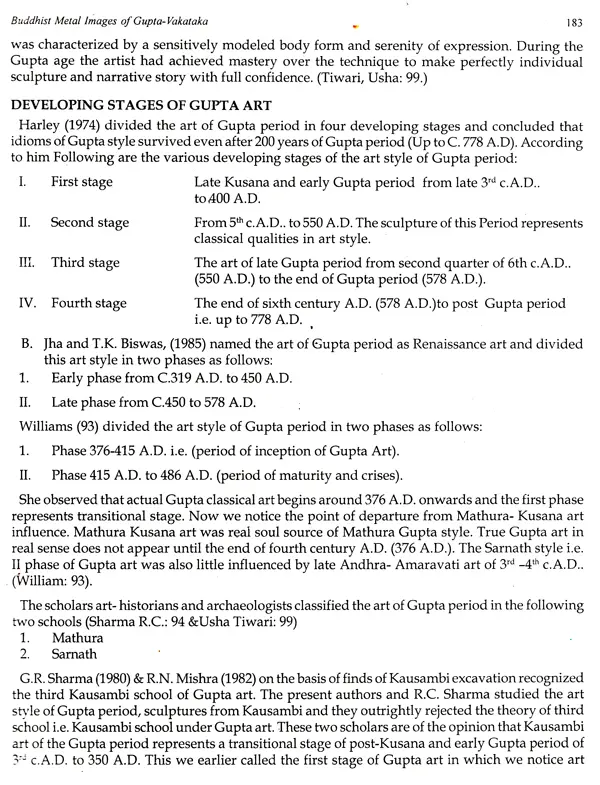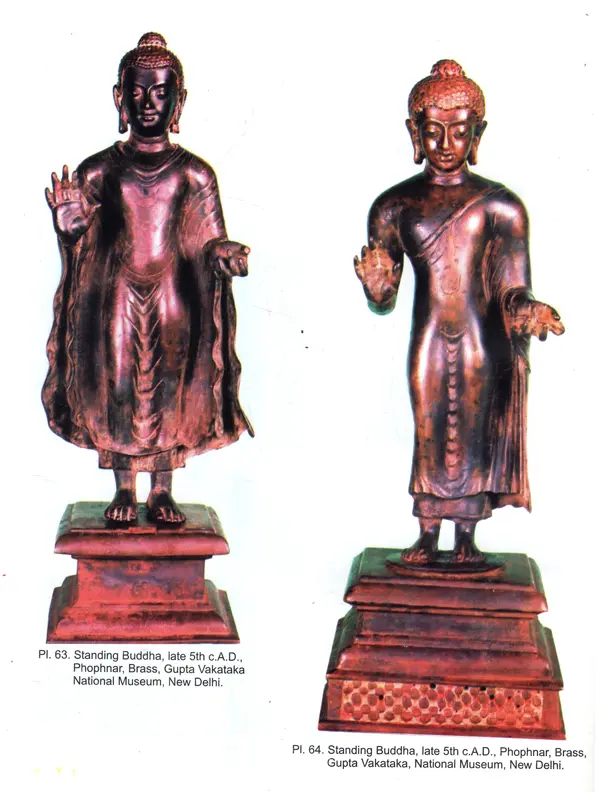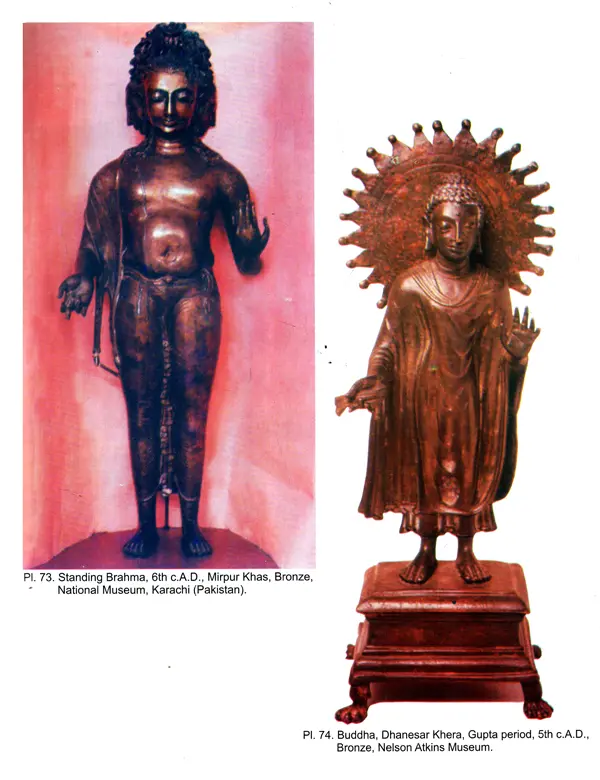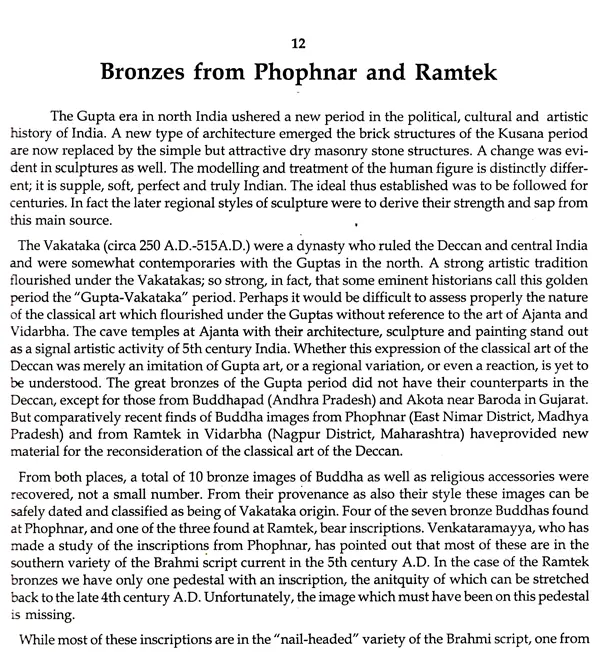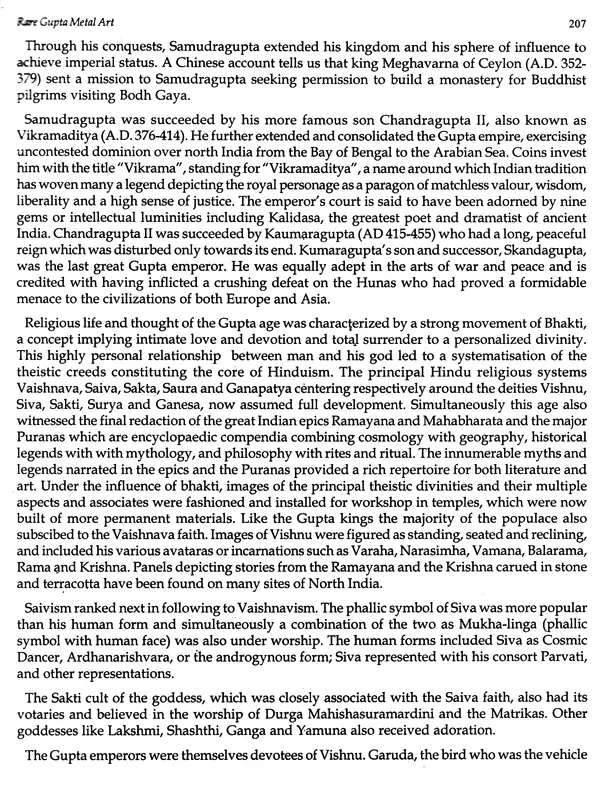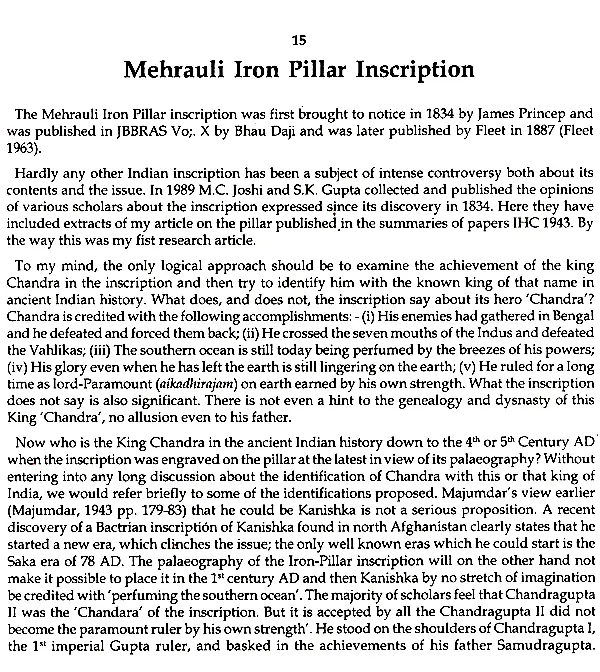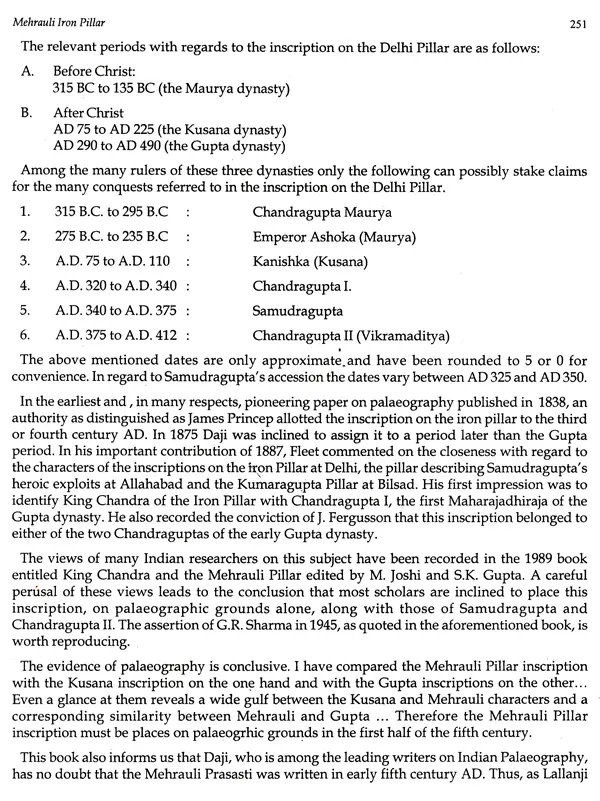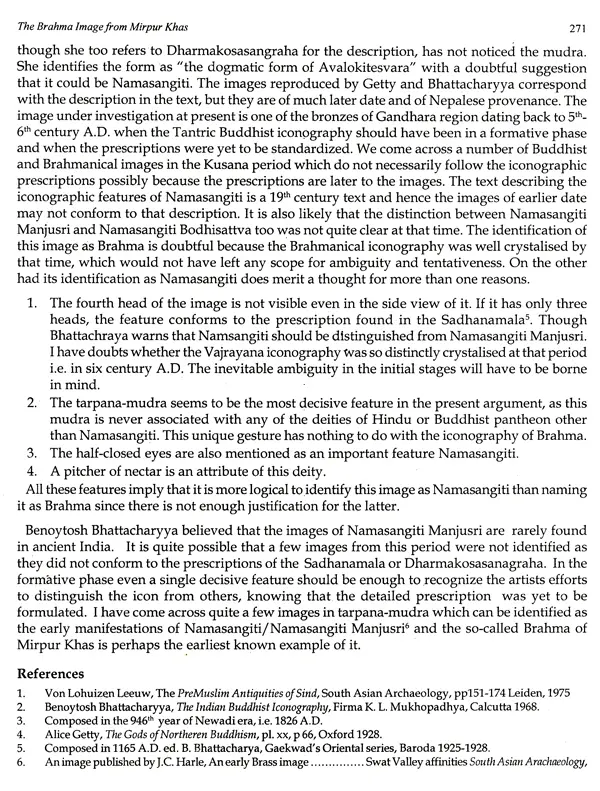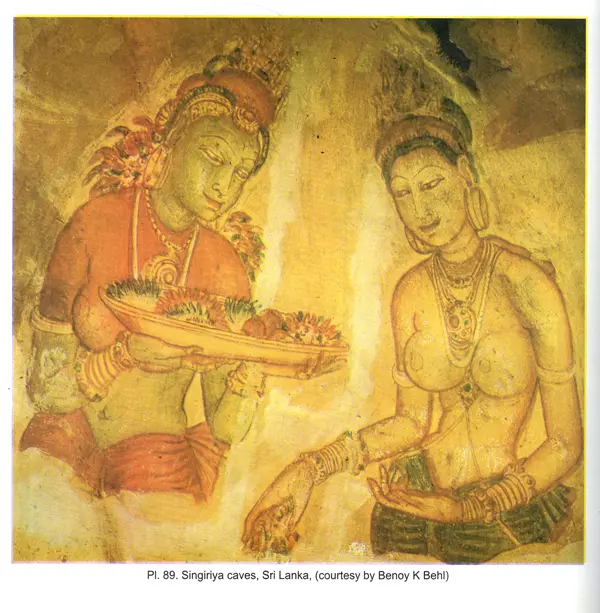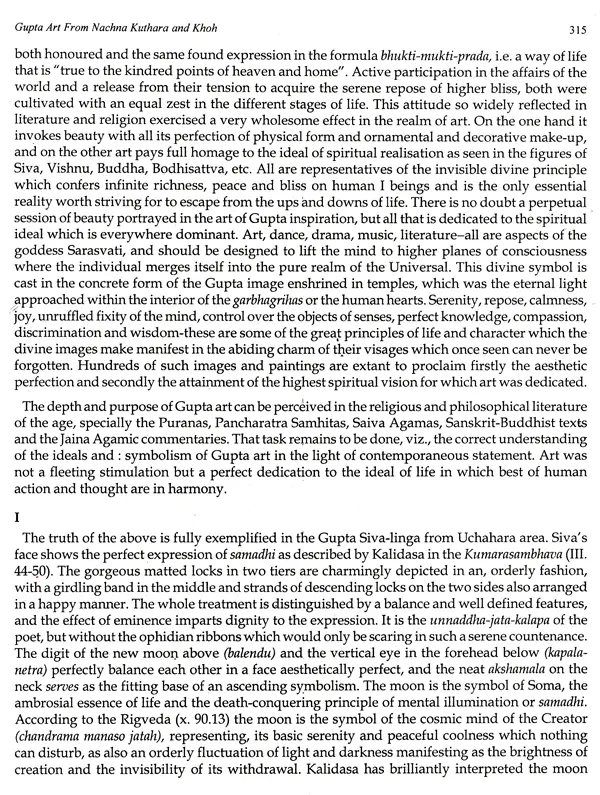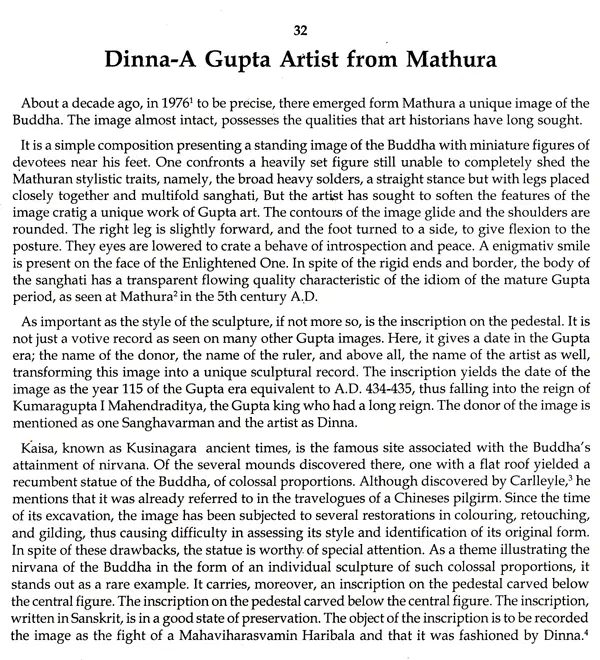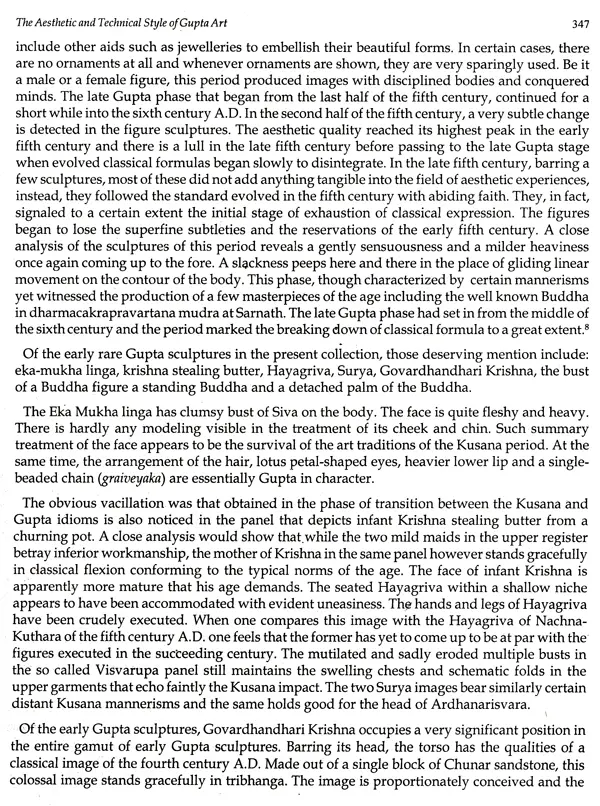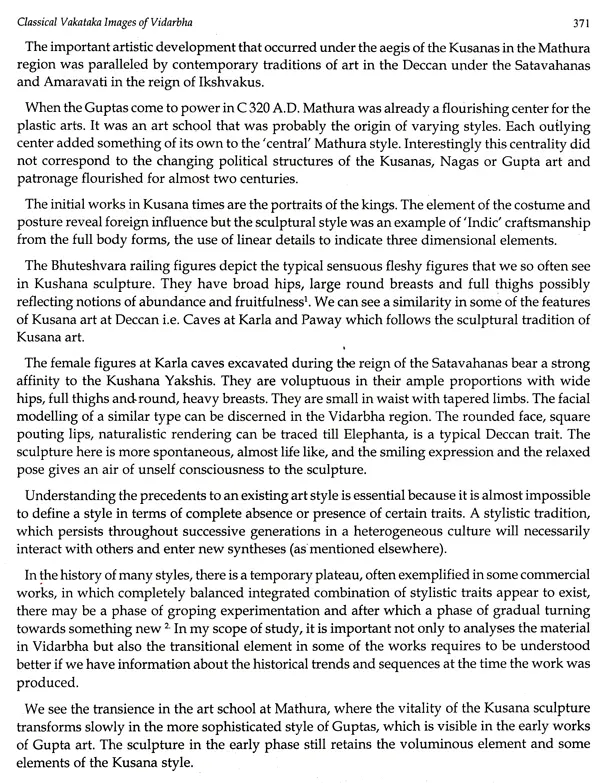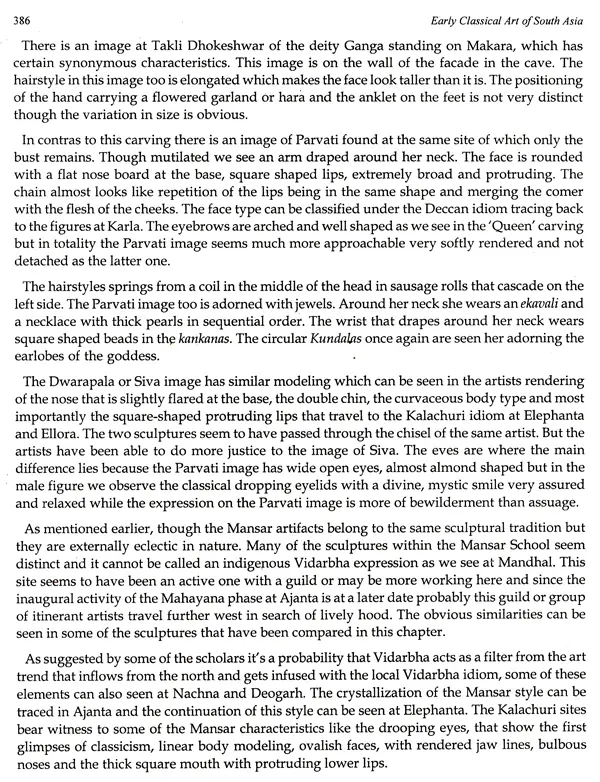
Early Classical Art of South Asia (Set of two Volumes)
Book Specification
| Item Code: | UAN392 |
| Author: | M. C Joshi & D. P. Sharma |
| Publisher: | Bhartiya Kala Prakashan |
| Language: | English |
| Edition: | 2009 |
| ISBN: | 9788180901881 |
| Pages: | 450 |
| Cover: | HARDCOVER |
| Other Details | 11.20 X 9.00 inch |
| Weight | 2.35 kg |
Book Description
Dunog Gupta Ape there was all round development particularly in fine arts erature both religious and non religious, sculpture, painting music, dance, drama, Kalidasay fiterary metaphors, lyrics and nors of beauty are found translated in art as much as the sofiness and suppleness I supplieses of limits of sculpture are found translated in painting
The three stages of Guptaarts like Kaishambi Mabura and Samach represent three variations in refinement. Kaushambi represents transitional stage (19-375 AD) of Kusana Gupta ant, Mathura style is the early phase of Cupta Art and Sarnath style shows more developmental stage of later part of Gupta Art The book covers art of Gupta Age (319-578 A.DJ Prof MC Joshi wrote introduction and contributed six papers in this volitine This book contains 39 papers of eminent art historians and archaeologists. The important papers are of Prof GC. Pande, RC Sharma, D.P. Sharma, Madhuri Sharma, AP Jamkhekar, Prof. Kristina Deva, Prof R. Balasubramaniam, 1.P Josh, B.C. Shokla, A.K. Sharma, VS. Agarwal, UN Kai. The Editors is of the opinion that Mathurs Art represents curlier stage and Sarnath Art is the developed stage of Gupta Art The Editors concluded that Vakataka metal images have their origin in late Amaravati school. Buddhist metal images of Ceylon as have their origin in late Amaravali School.
Dr. D.P. Sharma is an Archaeologist, Museologist and art historian. He did his M.A. Ancient history from Allahabad University and D.Phil research on art and Architecture of lower deab Ganga-Yamuna doab region under prof J.N. Pandey University of Allahabad, During 1983 84 he was awarded commonwealth scholarship and he qualified MA Archaeology from the Institute of Archaeology, University of London. He did excavation at Sussex (UK) and Pincenvent (France) under Dr. Mark Newcomer and Prof. Gourlan. Since 1985-2005 he had been working us head of Harappan and prehistoric collection of National Museum, New Delhi. In 2005 become Associate Professor in National Museum.
Dr. Sharma has published 210 Papers and 30 Books At present he is working As Director in Bharat Kala Bhavan, Varanasi.
During Gupta Age there was all-round development particularly in fine arts-literature both religious and non religious, sculpture, painting, music, dance, drama, 'Kalidasa's literary metaphors, lyrics and norms of beauty are found translated in art as much as the softness and suppleness of limbs of sculpture are found translated in painting. Same as the Bharata's Natyasastra is completely rejected in the dance and drama scenes of not only the sculpture and painting but also in the notes of music both vocal and instrumental. The epics Puranas provided most of the themes to artist for their creations. By this South Asia achieved the orchestral harmony in different arts Kalidas stone image of 5 century A.D. was reported at Ramtek (Nagpur). Kalidas was present at Ramtek in 5 century in Vakataka court, Who were relative of Guptas. Chandra Gupta If issued gold coins depicting Chakrapurusha and encircled spooked Chakra are depicted which represent here personified Vishnu and Chakra (Disk) Sux spoked wheel which be seen on Indus represents symbolic form of Kala.
The three stages of Gupta arts like Kaushambi, Mathura and Sarnath represent three variations in refinement. Kaushambi represents transitional stage (319-375 AD) of Kusana-Gupta art, Mathura style is the early phase of Gupta Art and Sarnath style shows more developmental stage of later part of Gupta Art.
The "EX MUKHA Sira Linga" from Khoh now in Allahabad Museum belongs to early phase of Gupta Art. The heavy body on the face of sculptures of the early phase represents survival of Kusana art tradition.
**Contents and Sample Pages**
